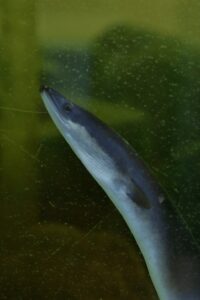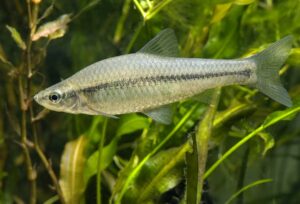Predatory fish : European Perch (Perca fluviatilis)

The European Perch, also known as the Eurasian Perch (Perca fluviatilis), is a small carnivorous fish in our freshwater bodies.
It resembles a marine zebra with a humpbacked body. Its distinctive appearance sets it apart in many ways: once you’ve seen a Perch, you can’t mistake it. The European perch scientific name is Perca fluviatilis. For anglers, this bold and spirited fish can be caught in various ways, whether using earthworms, maggots, live bait, or lures. The presence of European Perch is characterised by numerous and repetitive hunting behaviours, often marked by schools of panfish jumping near the water’s surface.
Embark on a journey to uncover the secrets of the European perch with our ultimate guide. Name to its natural habitat, this informative article is a must-read for fishing enthusiasts and amateur anglers seeking to deepen their understanding of this fascinating species. Whether you’re a seasoned pro or just starting, this comprehensive exploration will equip you with the knowledge to appreciate and potentially catch the elusive European perch.

What is European Perch?
The European Perch Perca fluviatilis is a freshwater fish from the Percidae family. Its green coat with black stripes and a slender, elongated body characterise it. It is known for its relatively small size, excellent agility, and ability to prey on various types of food. The European Perch is a predatory fish that primarily feeds on other fish but also consumes crustaceans and insects. It is active throughout the day and prefers shallow waters, often near the shores or obstacles such as branches and rocks. The European Perch is highly sought after by sport fishermen due to its spirited fight when caught and its delicate flesh.
Description of the European Perch (Perca fluviatilis)
Determination
The European Perch or Eurasian Perch (Perca fluviatilis) possesses an oval, high, laterally compressed body and a humped back, physical traits of a fish that is more agile than fast. The head, of medium size, is short, and the eyes are large, adapted to the predatory behaviour of the Perch. The rear edges of the opercula end in sharp points valid for self-defence. Its mouth is large, allowing it to engulf large prey. The jaws and palate of the Perch are equipped with small teeth.
The European Perch (Eurasian Perch) has two separate dorsal fins. The first is made up of spiny rays, while the second has soft rays. The dorsal fins of this fish are high. The caudal fin is slightly notched, and the anal fin has a spine in its anterior part.
The back of the European Perch is dark grey to greenish, resembling the dark green of figs. Therefore, its name “Perch” comes from the Greek “perkanos,” which is the name of this colour. Its flanks are lighter, and its belly is cream-coloured. Six to nine dark vertical bands mark the Perch’s coat, providing this fish with a characteristic camouflage.
The caudal, anal, and pelvic fins are bright red. The other fins appear colourless, except for the first dorsal fin, which has a dark spot in its posterior part. Except for the head, the body of the Perch is covered with “ctenoid scales,” petite and rough, giving this fish a typical roughness well known to fishermen.
| Class |
| Actinopterygii |
| Order |
| Perciformes |
| Family |
| Percidae |
| Genus |
| Perca |
| Species |
| P. fluviatilis |
| Binomial Name |
| Perca fluviatilis (Linnaeus, 1758) |
Size and Weight
The typical European Perch, also known as the Eurasian Perch (Perca fluviatilis), ranges from approximately 20 to 35 cm (8 to 14 inches) in length and weighs between 250 g (0.55 lbs) and 1.5 kg (3.3 lbs). The largest individuals can grow up to 60 cm (24 inches) in length and weigh as much as 4 kg (8.8 lbs).
European perch habitat and distribution
The European perch (Perca fluviatilis) is abundant in relatively shallow lakes with deep light penetration. It is less productive in deep lakes and those with low light penetration. The species has been widely introduced, with reported adverse ecological impact after introduction. For example, in Australia, the European perch is implicated in declining the now-endangered native fish, the Macquarie perch.
The European perch can be found in slow-moving rivers, canals, and ponds with abundant vegetation. It is native to Europe, where it is widespread, but it has also been introduced in other parts of the world, including North America, Australia, and New Zealand. Understanding the European perch’s habitat and distribution is essential for anglers targeting this species in different locations.
European perch diet
The European perch is carnivorous, with juveniles feeding on zooplankton, bottom invertebrate fauna, and other perch fry. In contrast, adults feed on invertebrates and fish, mainly Sticklebacks, other Perch, Roach, and minnows. Perch start eating other fish when they become fingerlings at a size of around 120 mm (4.7 in).
European perch breeding
Male perch become sexually mature between one and two years, while females become sexually mature between two and four years. The breeding season for European perch typically occurs from April to May, when water temperatures reach around 8-12°C. During this time, the male perch establish territories and build nests in shallow water, where the females lay their eggs. After spawning, the male guards the eggs until they hatch, which usually takes 10-20 days, depending on the water temperature.
Fishing Techniques to catch European perch
- Float Fishing: Float fishing is famous for catching freshwater fish like European Perch, especially in shallow waters. This method uses a floating line with a small hook and bait, such as a worm or a small lure.
- Lure Fishing: Lure fishing effectively targets European Perch Perca fluviatilis in deeper waters. This approach utilises artificial lures, such as spoons or soft lures, designed to mimic the European perch’s natural prey. The lure is presented at various depths until the ideal feeding zone for the Perch is located.
- Fly Fishing: Fly fishing is a favoured method in areas with abundant insects. This technique employs artificial flies that imitate the European Perch’s natural food sources, such as insect larvae. Using a specialised fly fishing rod, the fly is presented on the water’s surface or beneath it.
- Trolling: Trolling is a boat fishing technique used for European Perch. It involves using an artificial lure with a small weight that drags the line deeper into the water. The lure is presented at different depths by lifting and dropping it, enticing the Perch to strike.
Conservation Status of the European perch Perca fluviatilis
The European perch is classified as least concern (LC) on the IUCN Red List, indicating that it is not currently facing any significant threat of extinction.
Conservation efforts for the European perch are essential, especially in areas where it has been introduced and is causing ecological harm. It is essential to monitor and manage the populations of this species to prevent further negative impacts on native ecosystems. Additionally, understanding the European perch’s breeding habits and life cycle is crucial for implementing effective conservation measures. Researchers and conservationists continue to study the behaviour and ecology of the European perch to develop strategies for its sustainable management and protection in its native and introduced habitats.

Regional Names
The European perch Perca fluviatilis is known by different names in various regions, reflecting its wide distribution across Europe, Asia, and beyond. In Austria, it is called “Kretzer,” “Flussbarsch,” and “Heuerling” in German. The French name of the European perch is “Perche européenne“. In Croatia, it is known as “Grgeč” in Croatian. In Lithuania, it is referred to as “Paprastasis europinis ešerys” and “Ešerys” in Lithuanian. These are just a few examples of the regional names for the European perch across different countries and languages.
What are the differences between yellow perch and European perch?
Yellow perch (Perca flavescens) and European perch (Perca fluviatilis) are two distinct species of perch with some notable differences. Yellow perch are native to North America, particularly in the Great Lakes and Mississippi River basins, while European perch are found in Europe and parts of Asia. In terms of appearance, yellow perch have a more yellowish or golden hue, while European perch have a darker, greenish coloration with distinct vertical bands. Additionally, yellow perch tend to be smaller, typically reaching lengths of 10-25 cm (4-10 inches) and weights of 50-125 g (1.8-4.4 oz), whereas European perch can grow larger, reaching sizes of up to 60 cm (24 inches) and weights of up to 4 kg (8.8 lbs). These habitat, appearance, and size differences distinguish the two perch species.






